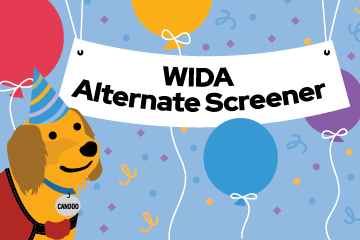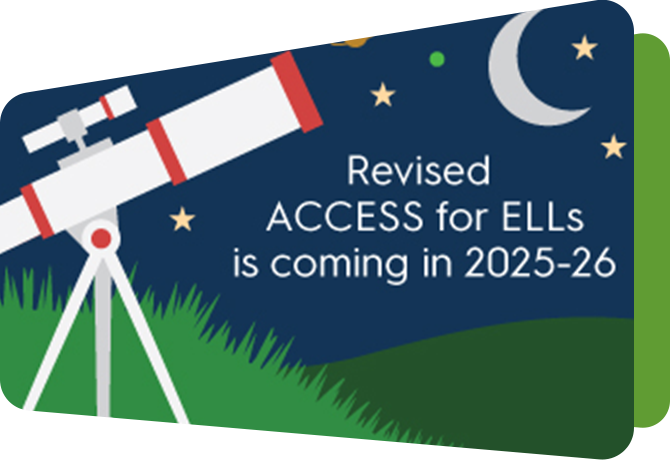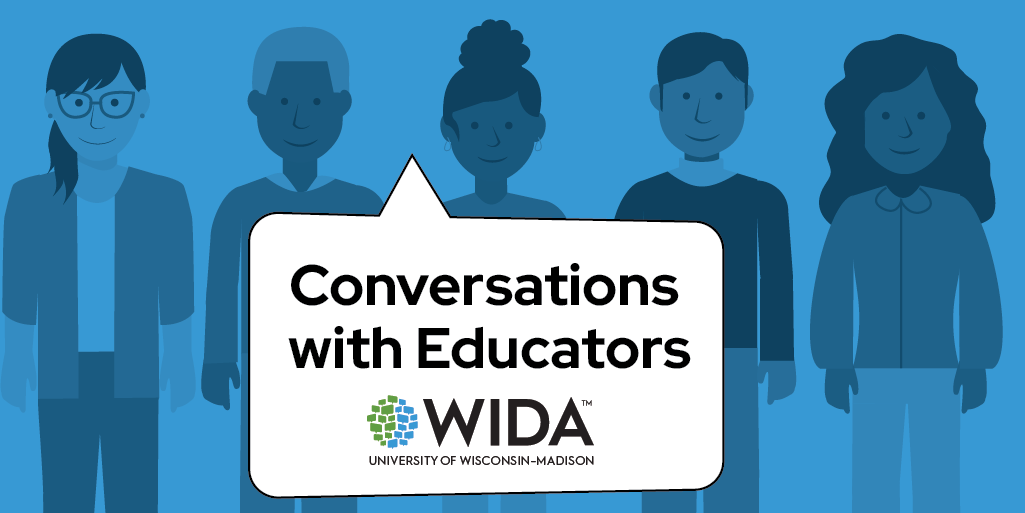Introducing WIDA Alternate Screener

Members of the WIDA Consortium now have access to a new, inclusive tool designed to better serve a critical student population: WIDA Alternate Screener. It’s a specialized English language proficiency assessment for newly enrolled students in grades K-12 with the most significant cognitive disabilities. WIDA Alternate Screener will help educators determine if these students are multilingual learners (MLs), ensuring they receive the language support they need from day one.
Why a New Screener?
Federal education law requires that all potential MLs be assessed for English language proficiency. While WIDA already offers the WIDA Screener and WIDA Screener for Kindergarten, these assessments may not be appropriate for students with the most significant cognitive disabilities. WIDA Alternate Screener was created to fill that gap, offering an appropriate assessment pathway for these learners.
What Makes WIDA Alternate Screener Unique?
- Inclusive by Design: Developed through the Advancing ALTELLA grant, the assessment was created with direct input from educators across the WIDA Consortium. Educators wrote and reviewed test items to ensure they were accessible, valid and free from bias.
- Time-Efficient: The assessment takes no more than 30 minutes. There are a total of nine test items.
- Flexible Administration: WIDA Alternate Screener can be administered at any time during the school year, allowing educators to promptly identify MLs as they enroll.
- Built on Familiar Foundations: The administration and scoring processes mirror those of WIDA Alternate ACCESS, offering consistency and familiarity for educators.
Who Should Take WIDA Alternate Screener?
WIDA Alternate Screener is intended for students with the most significant cognitive disabilities. While an explicit definition of “significant cognitive disabilities” has not been established at the federal level, WIDA researchers use the following definition: “individuals who have one or more disabilities that significantly limit their intellectual functioning and adaptive behavior as documented in their Individualized Education Programs (IEPs), and who are progressing toward English language proficiency in speaking, reading, writing, and understanding” (Christensen et al., 2018). Learn more about this definition and the research behind it in the ALTELLA brief on establishing a definition of English learners with significant cognitive disabilities.
WIDA developed the WIDA Alternate Screener Participation Decision Tree to help IEP teams determine the most appropriate screener. Individual states may have additional guidance for districts when deciding which assessment to take.
WIDA Alternate Screener is intended to be used as one element in the decision-making process of identifying a student as a multilingual learner. This decision should be supported by additional evidence, such as educational records from previous schooling, recommendations from previous teachers, the child’s home language survey, or any of the recommended or required criteria as determined by the state or district.
Get Started
- Refer to your member/state page for information on when and how to use WIDA Alternate Screener in your state. Not all WIDA Consortium member states are using WIDA Alternate Screener right now.
- Get familiar with WIDA Alternate Screener on the brand-new WIDA Alternate Screener webpage. The webpage has general information on the assessment and a step-by-step guide on preparing for and administering the assessment.
- After completing the steps above, test administrators can enroll in the brand-new WIDA Alternate Screener training course, which takes about 60 minutes to complete. Educators can download and print WIDA Alternate Screener test materials from the WIDA Secure Portal. Test administrators can use the new online score calculator and print score reports.





